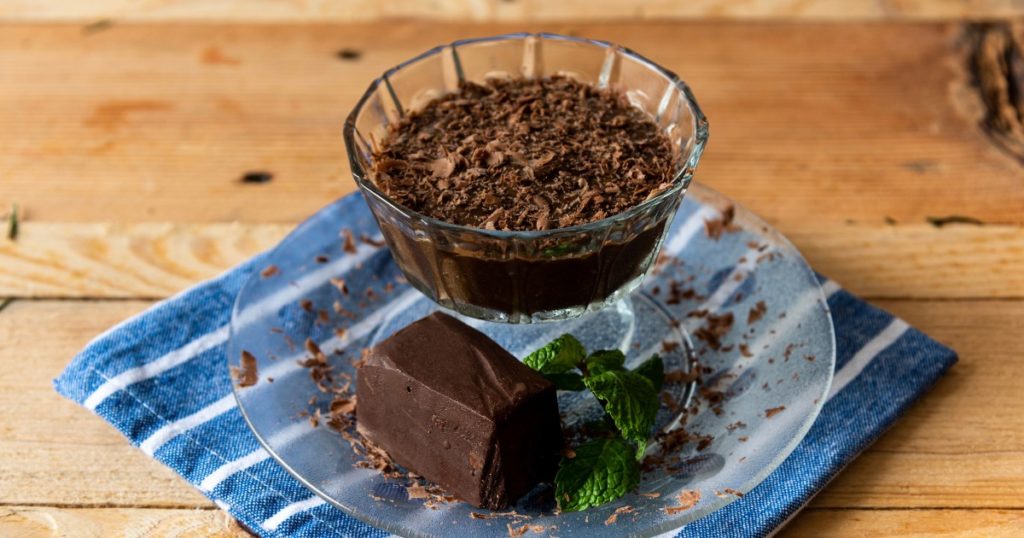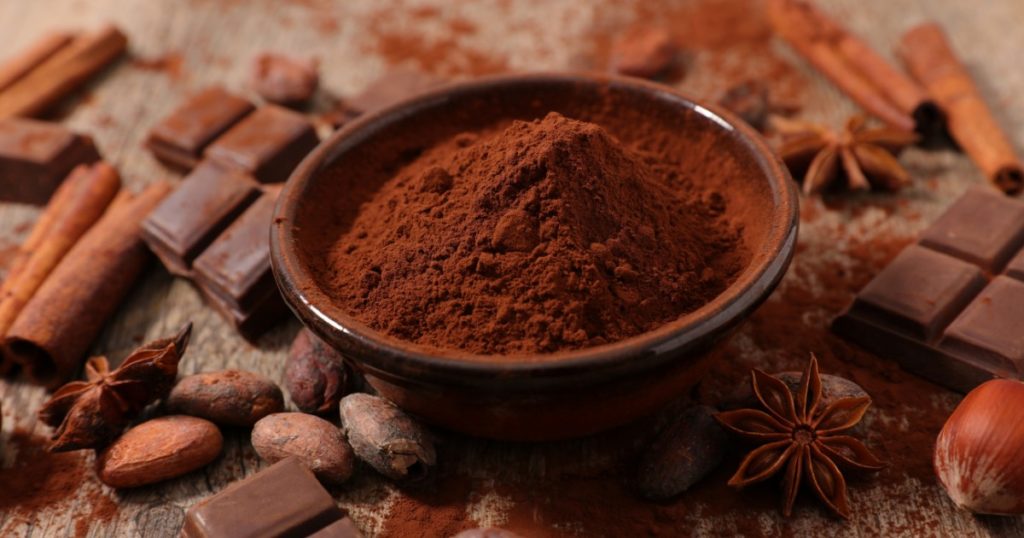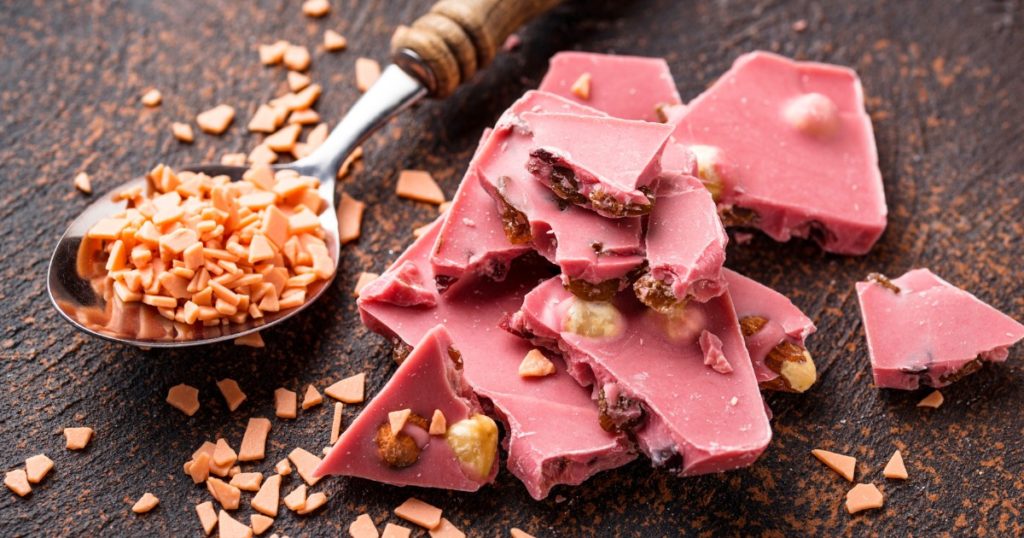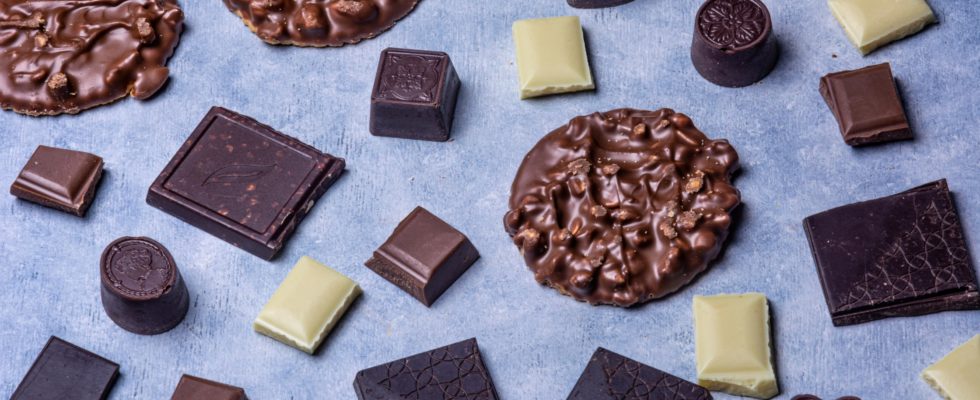As a home baker, you probably view chocolate differently: it’s a vital part of your baking pantry. But wouldn’t it be nice if the different types of chocolate were explained, especially with many varieties out there?
Not to worry—that’s what this article is for! Let’s explore some popular types of chocolate and see how they can affect your baking and make your treats even more delicious.
How do you make chocolate, anyway?
Making this ingredient called chocolate is a long process that begins far before the local chocolate shop or grocery store. Yup, you don’t just manufacture a chocolate bar and then sell it in stores. It’s a lot more complicated than that!
To make chocolate, you actually start with the seeds of the Theobroma cacao tree, also known as cacao beans. The beans from the tree are dried, roasted, and then ground, resulting in two products: cocoa butter, a smooth, solid, white fat; and what is called chocolate liquor, or ground cocoa beans.
The variety in chocolate mainly depends on how much cocoa butter and chocolate liquor it has compared to sugar, milk solids, and other things mixed in.
Types of Chocolate
On to the main section of this article! Here are some popular kinds of chocolate.
Milk Chocolate

Milk chocolate is a beloved kind of chocolate that you can enjoy for its smooth, creamy texture and sweet, mellow flavor. You can make this type of chocolate by combining cocoa solids with cocoa butter, sugar, and, as the name suggests, milk, either in liquid, powder, or condensed form. The presence of milk gives it a lighter color and a softer texture compared to its darker counterparts.
Typically, milk chocolate contains about 10% to 40% cocoa mixed with a higher proportion of sugar, which makes it much sweeter and less bitter than dark chocolate. Its mild and sweet profile makes it a popular choice for snacking, candy bars (like those covered in this article), and baking, appealing to a wide range of palates, especially those who prefer a less intense chocolate experience. Milk chocolate’s versatility and delightful taste make it a staple in the world of confections and desserts.
White Chocolate

White chocolate stands out in the chocolate family for its, well, white color. Aside from that, white chocolate doesn’t contain cocoa solids – the element that gives chocolate its usual brown color and rich taste. Instead, it’s made primarily from cocoa butter, which is the fat extracted from cocoa beans, combined with sugar and milk solids. This unique blend results in a creamy, ivory-colored chocolate with a smooth, velvety texture.
White chocolate’s flavor is sweet and rich-when you taste it, you might describe it as having a delicate, buttery profile with hints of vanilla. It lacks the bitterness associated with cocoa solids, making it a favorite for those who prefer a sweeter and less intense chocolate taste. The minimum cocoa butter content in white chocolate is usually about 20%, contributing to its melt-in-the-mouth quality.
White chocolate’s mellow and sweet character makes it a popular choice for ganaches, frostings, and as a coating for truffles and candies. Its ability to pair well with a variety of flavors, from fruits to nuts, also makes it a valuable ingredient for creating different kinds of desserts, even avant-garde ones. For those who enjoy experimenting in the kitchen, white chocolate offers a delightful canvas for culinary creativity.
Dark Chocolate

Dark chocolate is different from milk or white chocolate because it has more cocoa and less sugar. This gives it a darker color and gives it a bold, intense flavor. Dark chocolate is made with cocoa solids, cocoa butter, and a small amount of sugar, but usually doesn’t have much or any milk.
The amount of cocoa in dark chocolate can be anywhere from 30% to over 80%, meaning it is less sweet chocolate. However, people still like it because they consider it to be healthier and full of antioxidants. It’s great for baking things like rich cakes and desserts like chocolate brownies, and it goes well with lots of flavors, like fruits and nuts, especially if you’re looking for a flavor profile with a really chocolatey taste.
Unsweetened Chocolate

Unsweetened chocolate, also referred to as baking chocolate, is a pure form of chocolate used in cooking and baking. It’s made entirely from ground cocoa beans, resulting in a product that contains 100% cocoa solids without any added sugar. This gives this chocolate bar a very strong and bitter taste, making it unsuitable for eating on its own but ideal for recipes where other ingredients add the necessary sweetness.
You can use unsweetened chocolate as a base in recipes, combined with sugar and other ingredients to create a balanced flavor profile. Since it provides a deep, rich chocolate flavor to chocolate cakes, brownies, and other desserts and doesn’t have sugar, it allows bakers to control the level of sweetness in their creations. Its versatility makes it a must-have for anyone who loves to bake and experiment with chocolate recipes.
Cocoa Powder

Cocoa powder is a key ingredient in many baking recipes, known for its rich flavor and versatility. You make it by grinding cocoa beans and removing most of the cocoa butter, leaving a fine powder. This process results in a product that’s almost 100% pure cocoa content, giving it a strong, bitter chocolate flavor.
Because it’s unsweetened and has a low fat content, cocoa powder is perfect for adding a deep chocolate flavor to baked goods like cakes, cookies, and brownies without making them too heavy. It’s You can also use it in other recipes like hot chocolate, chocolate sauces, and even some savory dishes for a touch of richness. Cocoa powder also easily mixes into batters and doughs.
Couverture Chocolate

Couverture chocolate is a high-quality chocolate that is a favorite among professional chocolatiers and pastry chefs. What sets it apart is its high cocoa butter content, typically ranging from 32% to 39%, which gives it a superior ability to coat and mold into shapes with a smooth, glossy finish. This high percentage of cocoa butter, combined with proper tempering, ensures that couverture chocolate melts evenly and has a satisfying snap when broken.
This kind of chocolate comes in dark, milk, and white chocolate varieties, offering versatility in flavor and application. It’s also Ideal for making fine chocolates, truffles, and chocolate decorations, especially since couverture chocolate has a rich flavor and creamy texture. Whether it’s for dipping, coating, or as a base for ganaches, couverture chocolate provides a luxurious taste and professional-quality results, making it a must-have for anyone serious about chocolate crafting.
Want a taste of using this type of chocolate? Try out Chef Ely Salar’s The Art of Chocolate class.
Ruby Chocolate

Ruby chocolate is a relatively new and unique addition to the chocolate world, known for its striking pink color and distinct flavor. Introduced in 2017, chocolatiers make this from specially selected ruby cocoa beans, which naturally have a pink hue. This type of chocolate stands out not just for its color but also for its complex flavors, which you can describe as a unique taste of white chocolate and berries, without the addition of any berries or fruit flavors.
Unlike traditional chocolates, ruby chocolate offers a tart yet sweet experience, making it a popular choice for innovative confectionery creations. It’s particularly appealing for its aesthetic value in desserts and chocolates, offering a visually stunning alternative to the classic chocolate varieties. Ruby chocolate’s unique flavor profile and eye-catching appearance make it a favorite among chefs and food enthusiasts looking to experiment with new and trendy ingredients in their culinary creations.
And of course, these would look super appealing if, say, you made a gift basket, especially during the holiday season or special occasions. Your eye-popping chocolate gifts would be the talk of everyone.
Which type of chocolate is the most popular?
It’s hard to say which type of chocolate is the most popular because everyone has their own favorite. It’s the same as answering how many types of chocolate are there. Why?
For instance, some people might say milk chocolate is the most popular type because it’s sweet and creamy. Plenty of companies and chefs also use milk chocolate in candy bars and desserts.
Then there’s dark chocolate, which has been getting more popular lately, especially with adults who want something less sweet and maybe a bit healthier, as mentioned above. White chocolate is also popular in its own way. It’s really sweet and doesn’t taste much like regular chocolate, but lots of people like it for its creamy flavor.
In short, it really depends on who you ask. Everyone has their own favorite when it comes to eating chocolate for sure!
Want the types of making artistic chocolate explained?
Now that the different types of chocolate that are popular have been explained to you, what’s the next step? Well, you might want the opportunity to explore the delightful world of chocolate making.
If yes, The Bailiwick Academy has you covered! Introducing Chef Miko Aspiras’ latest class, Festive Chocolate Confections!
In this class, you’ll learn how to make amazing chocolate treats. We’ll show you how to make cool Chocolate Blocks of different flavors, fancy Chocolate Lollipop Webs, and really special Matcha Nama Chocolate. You’ll work with different kinds of chocolate like milk, dark, and white, and learn how to turn them into beautiful chocolate pieces.
These chocolates won’t just look good or be great as sweet treats; they can also be good for your business if you’re thinking of selling them!
So, are you ready to start creating awesome chocolate creations? Sign up at The Bailiwick Academy and start your chocolate-making adventure today!
—
Keep coming back to The Bailiwick Academy blog for more baking and cooking tips, kitchen tricks, and much more!


Pingback: Top Food Trends in 2024 - Online Baking and Cooking Classes - The Bailiwick Academy